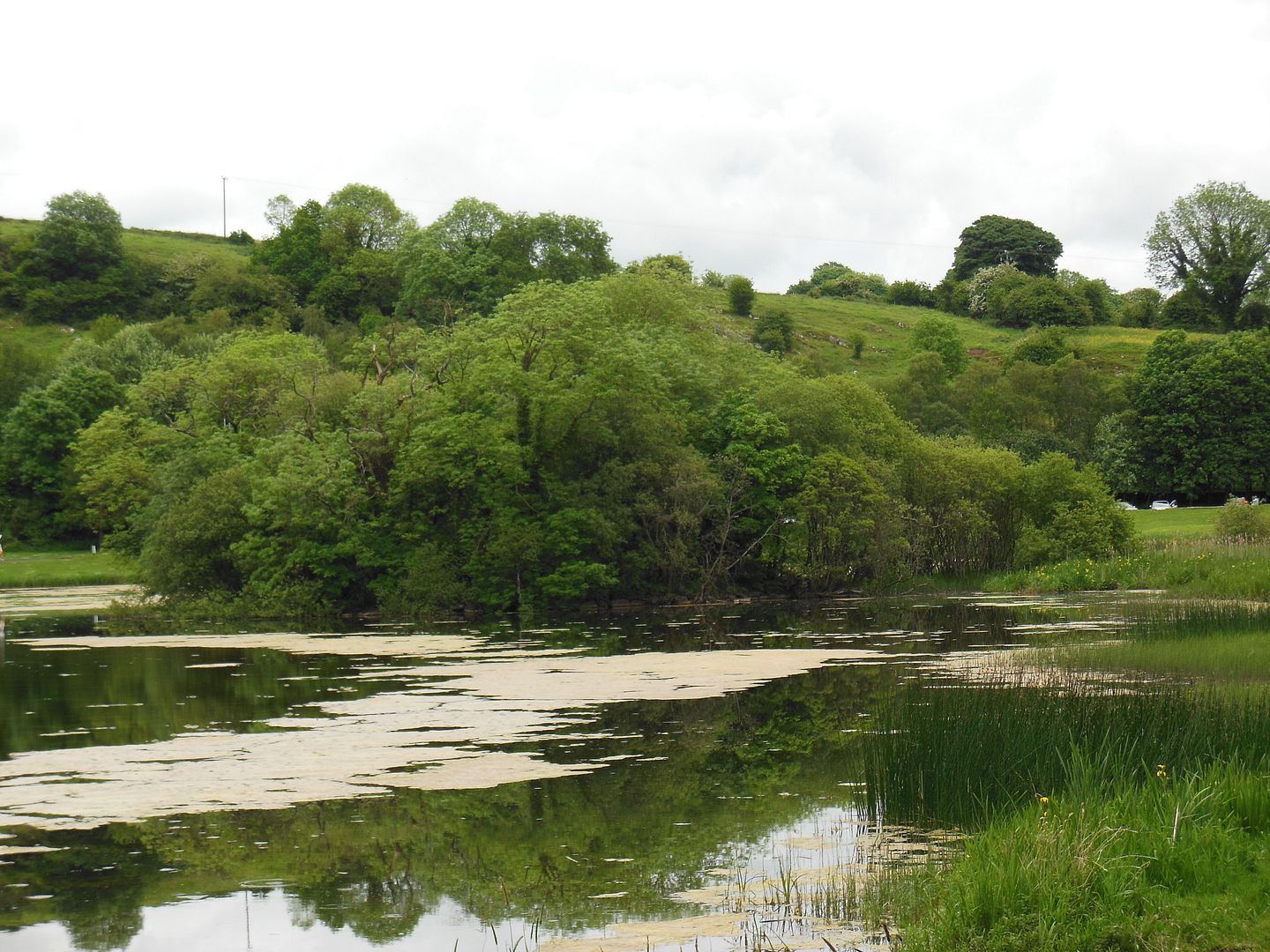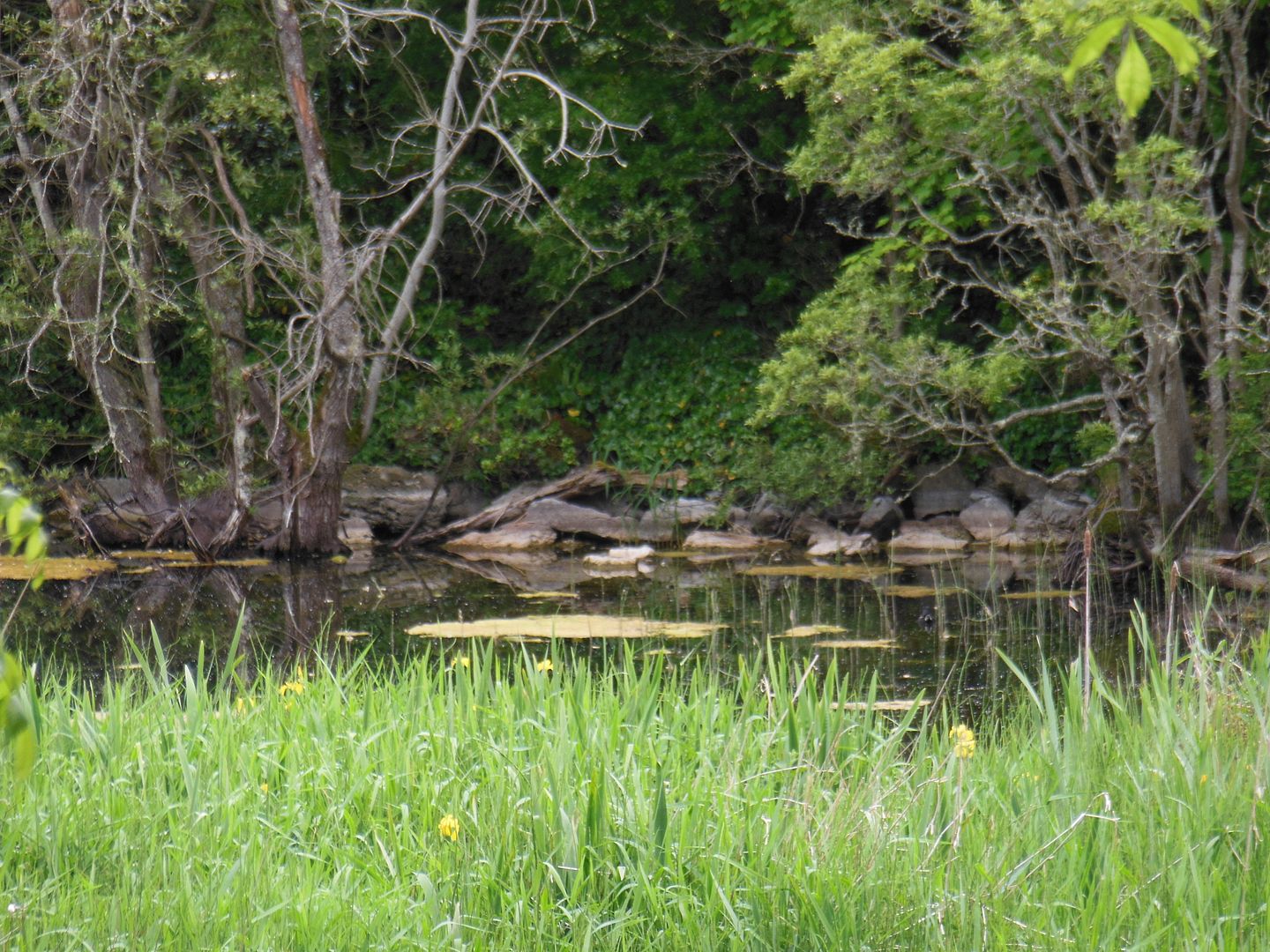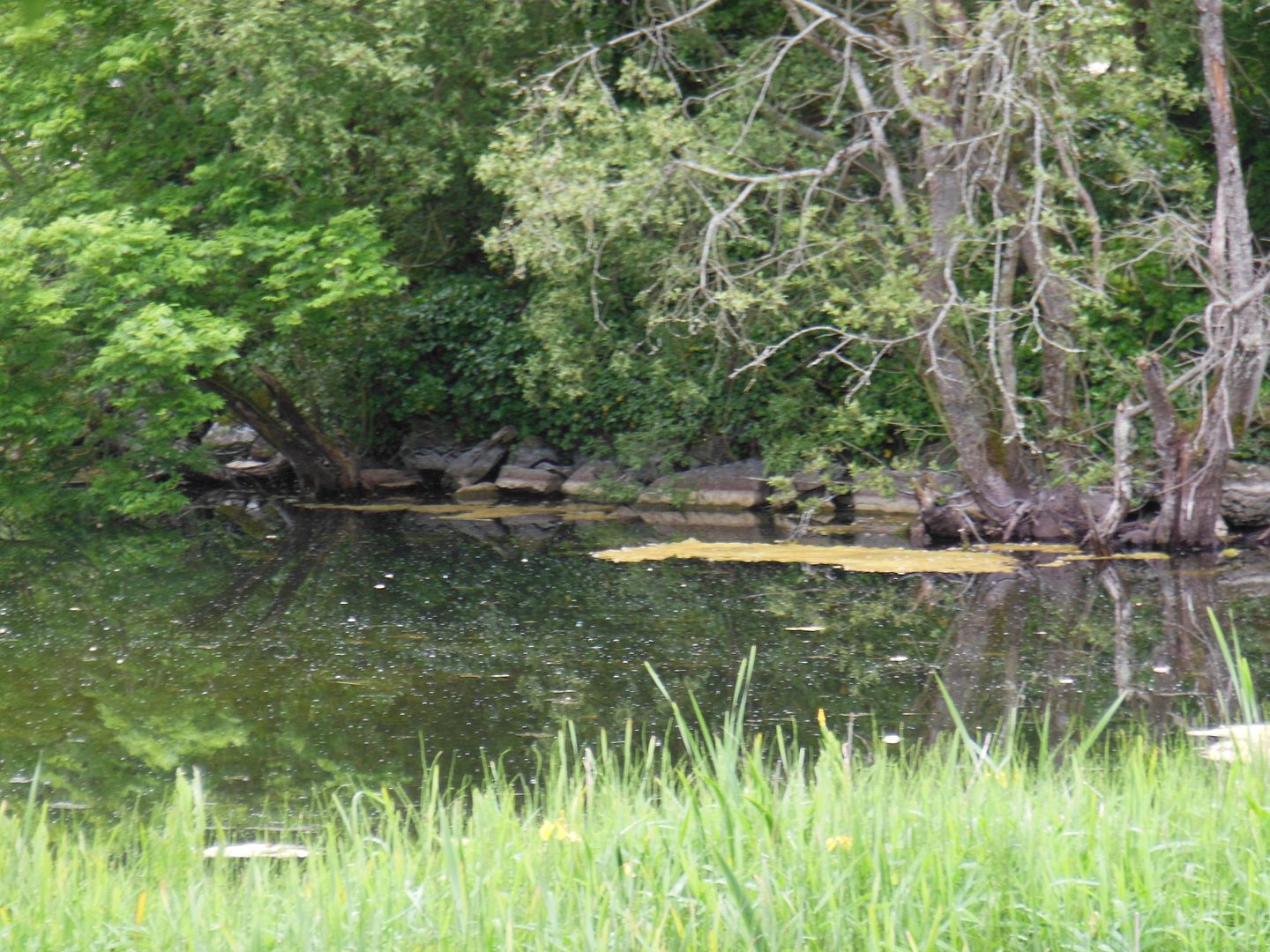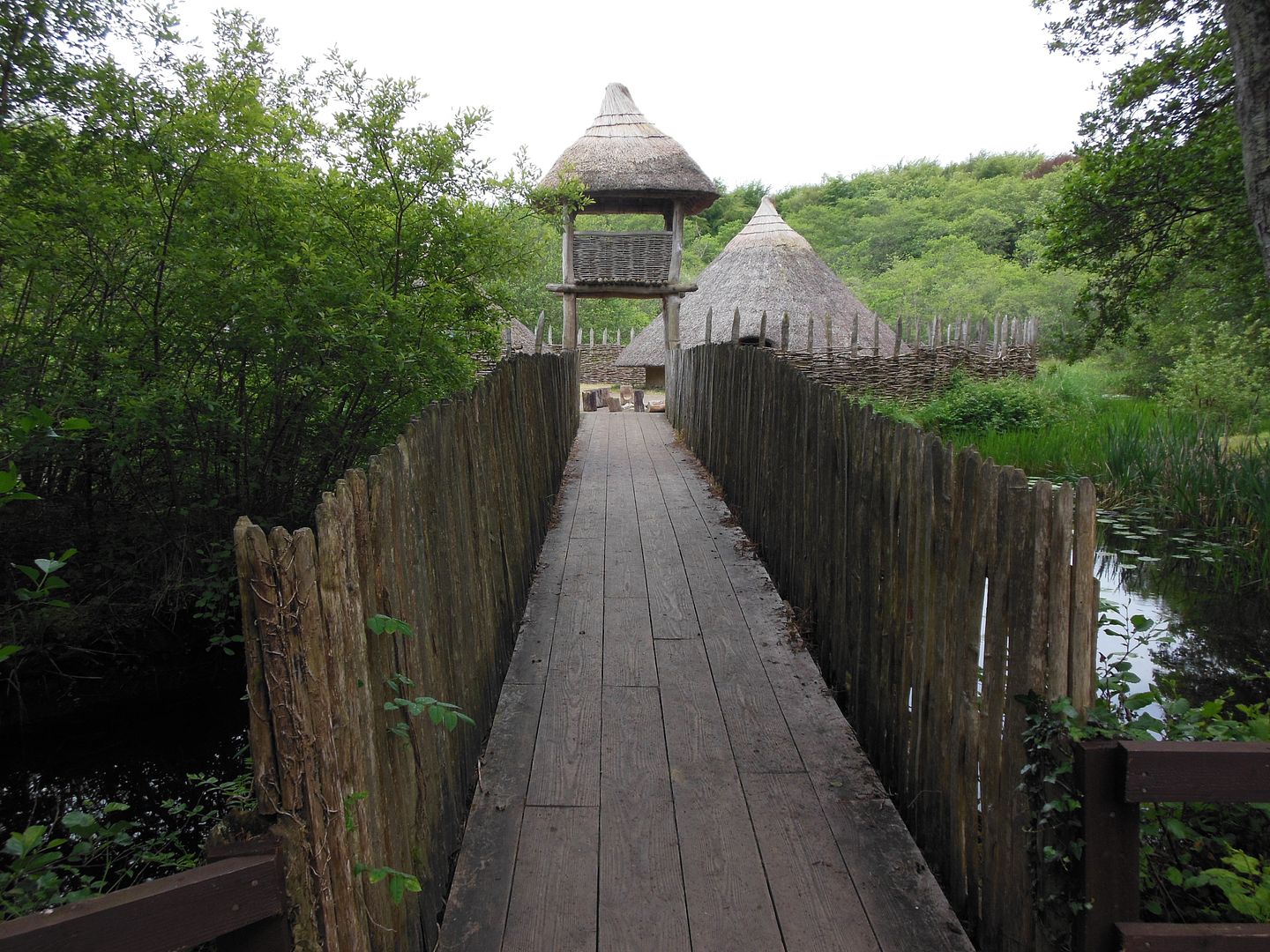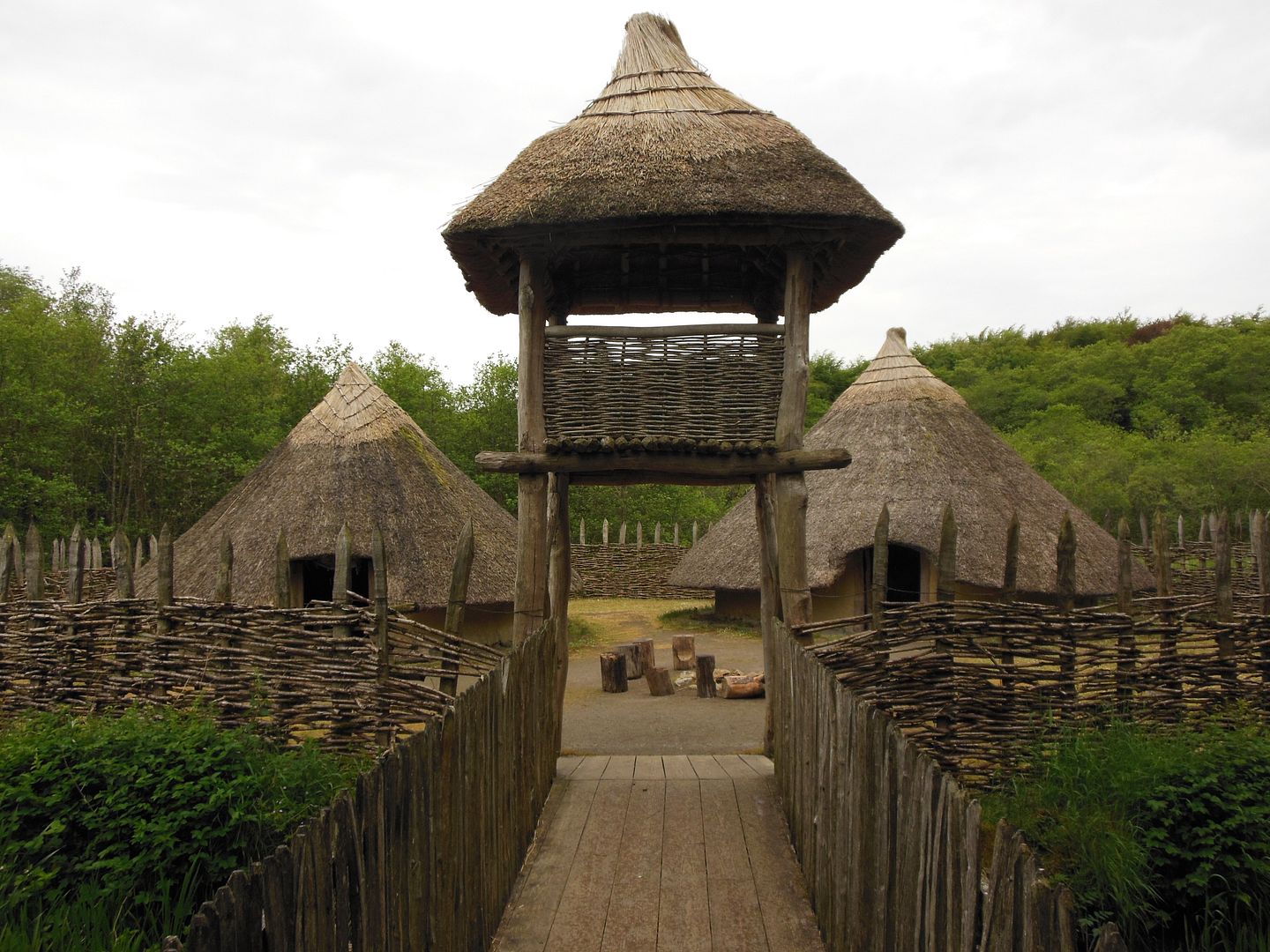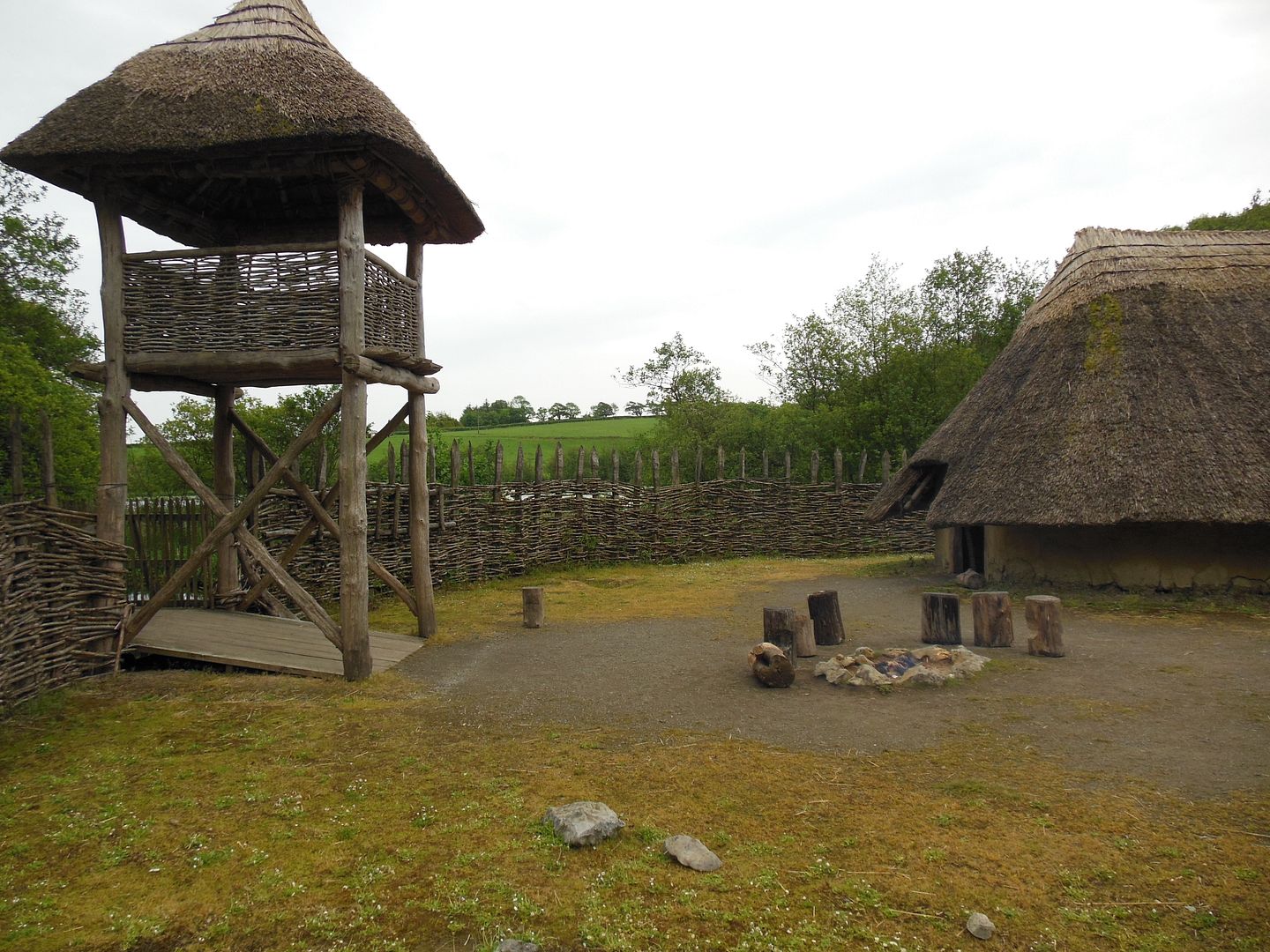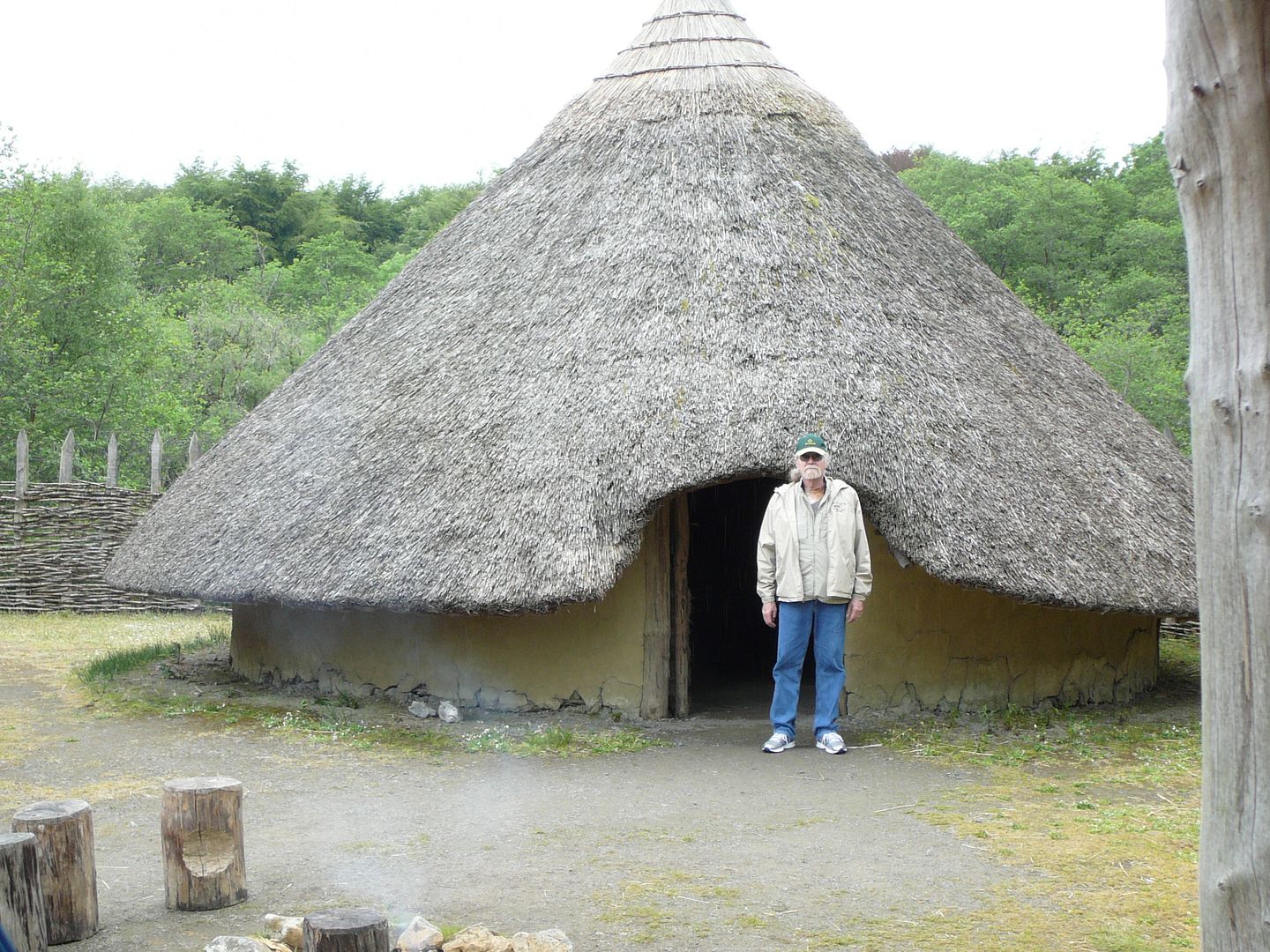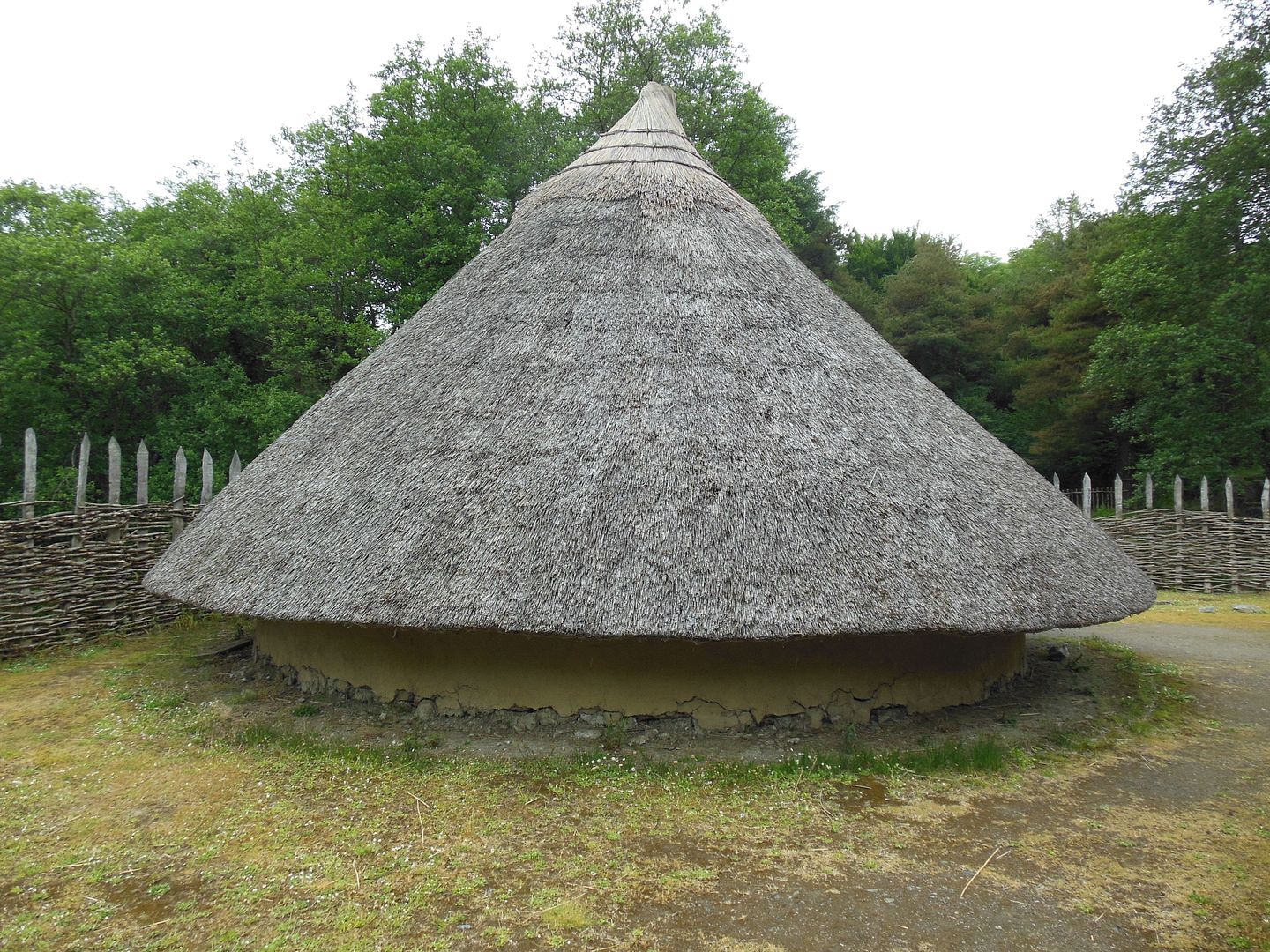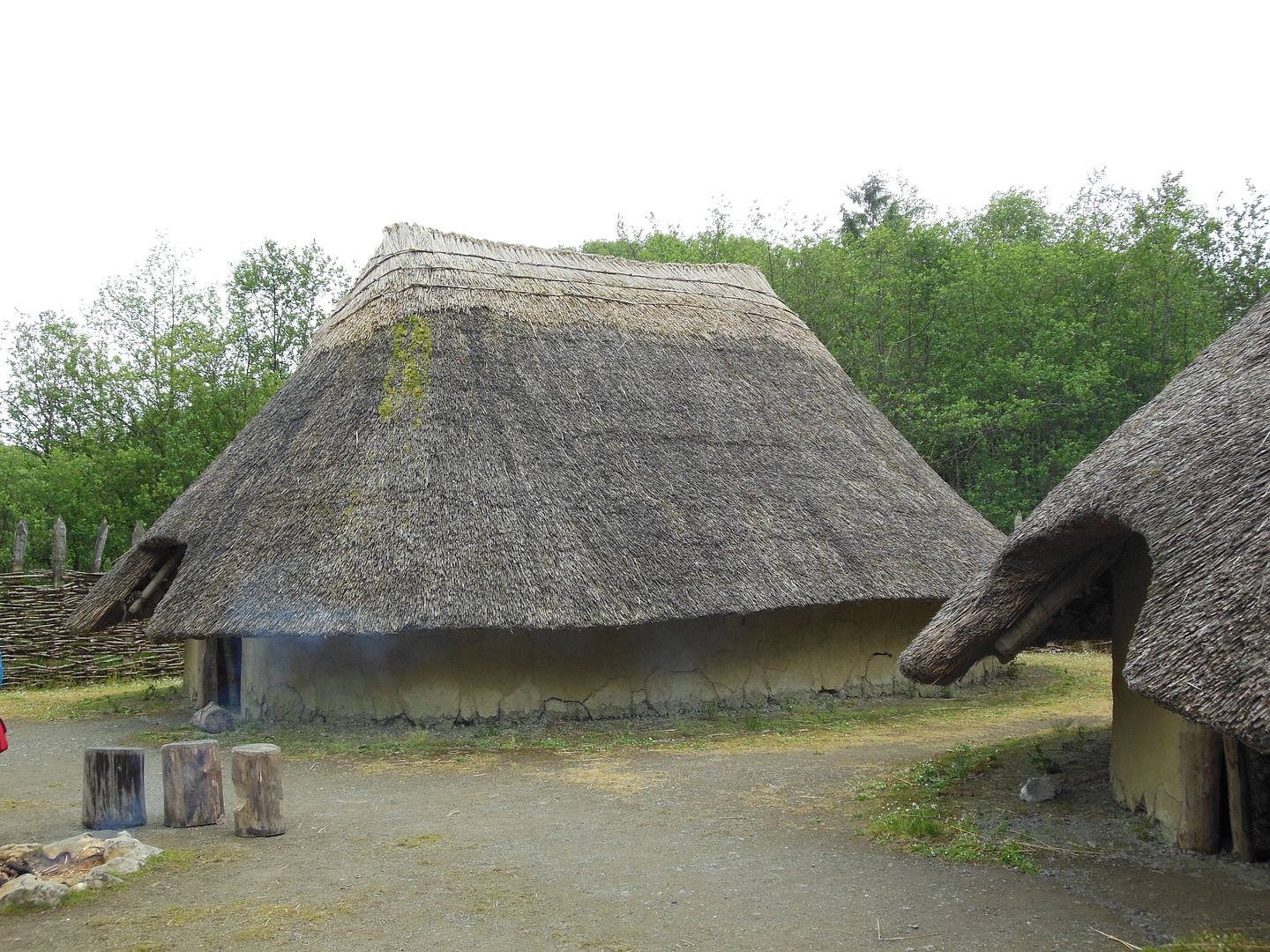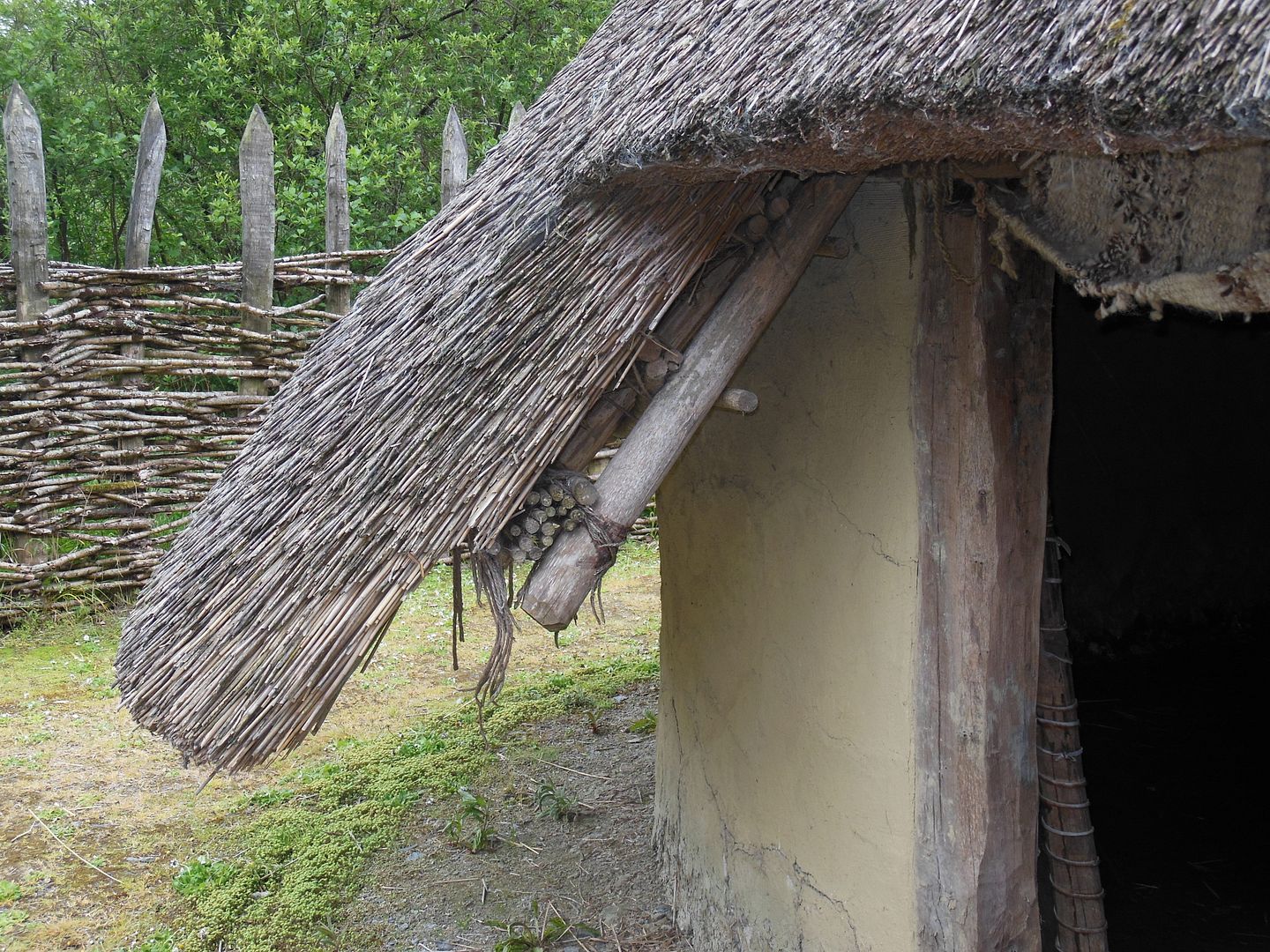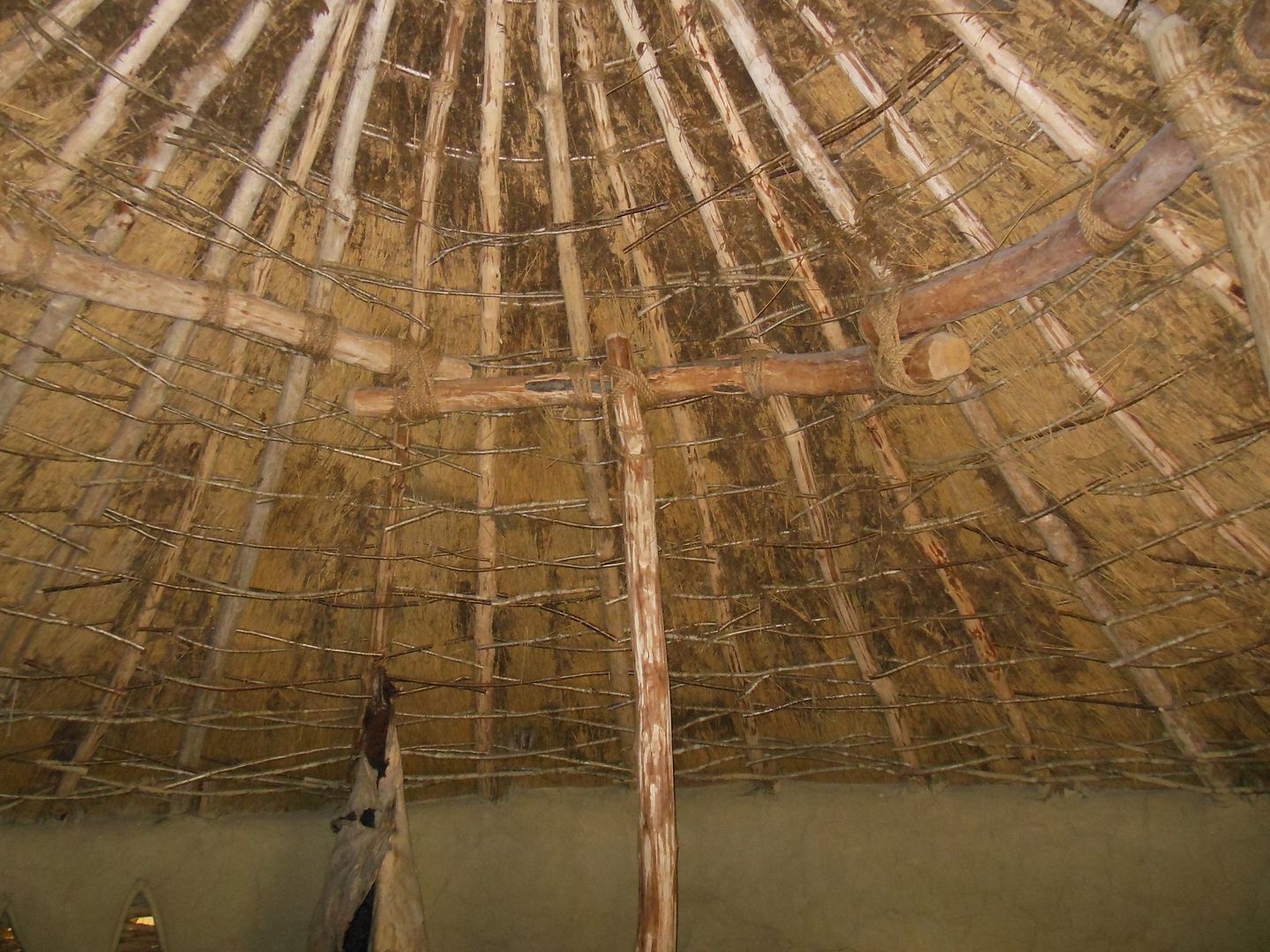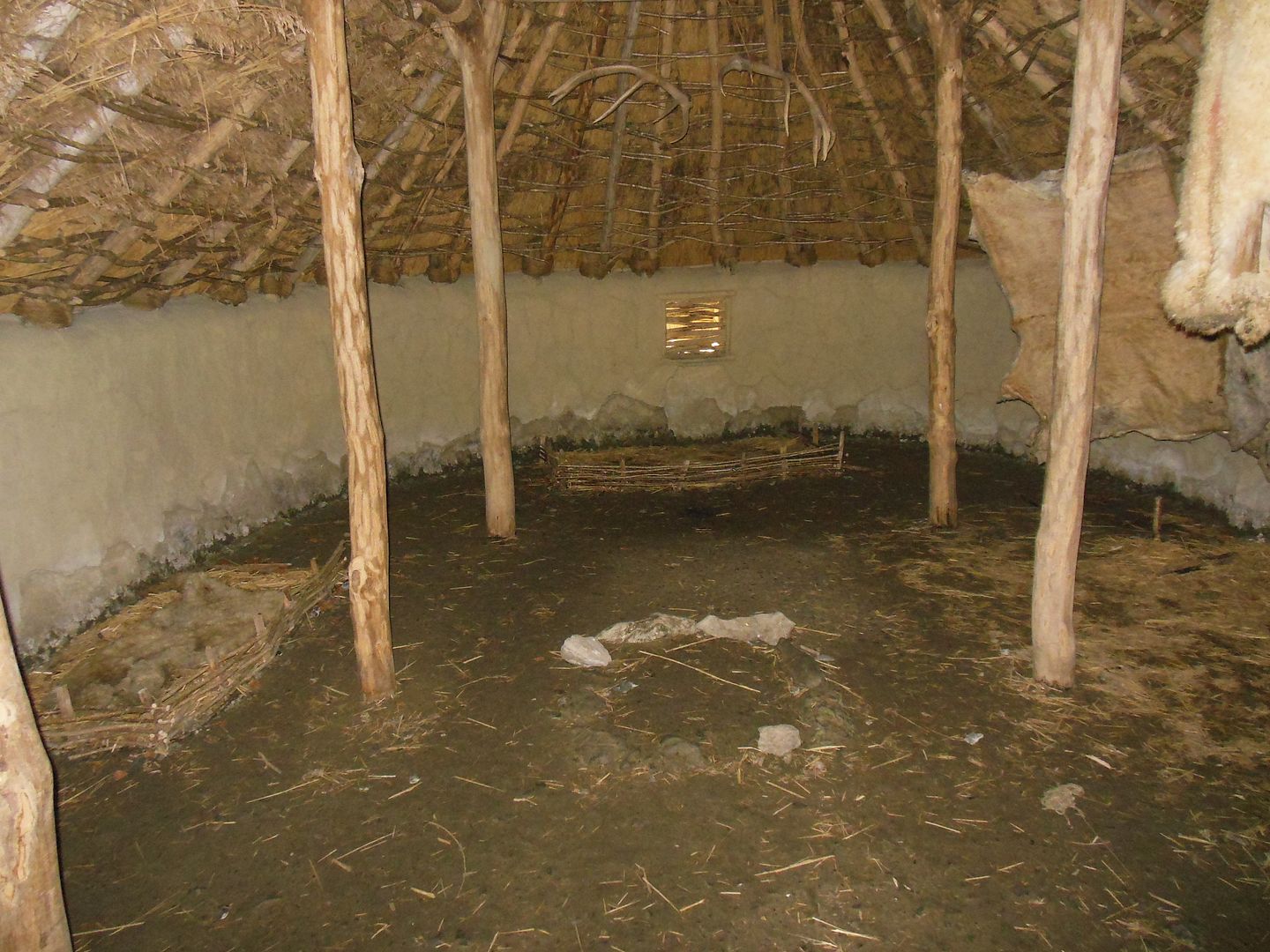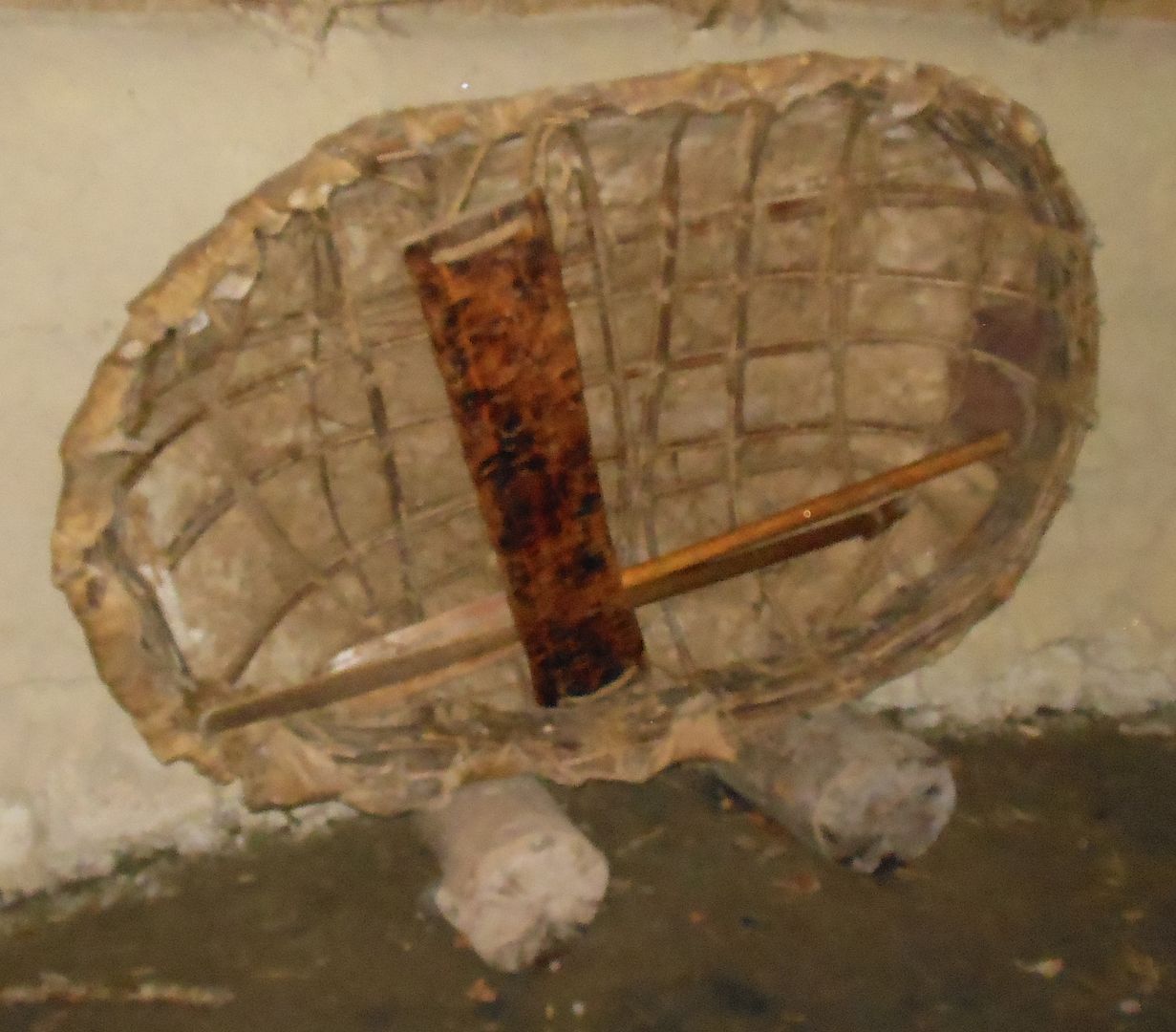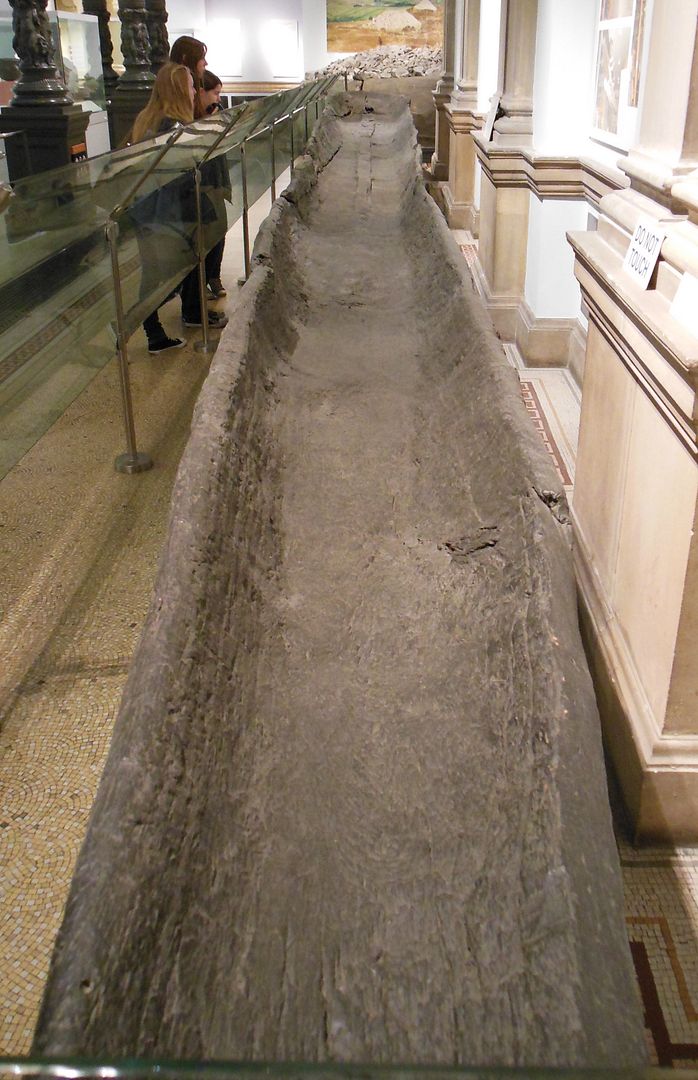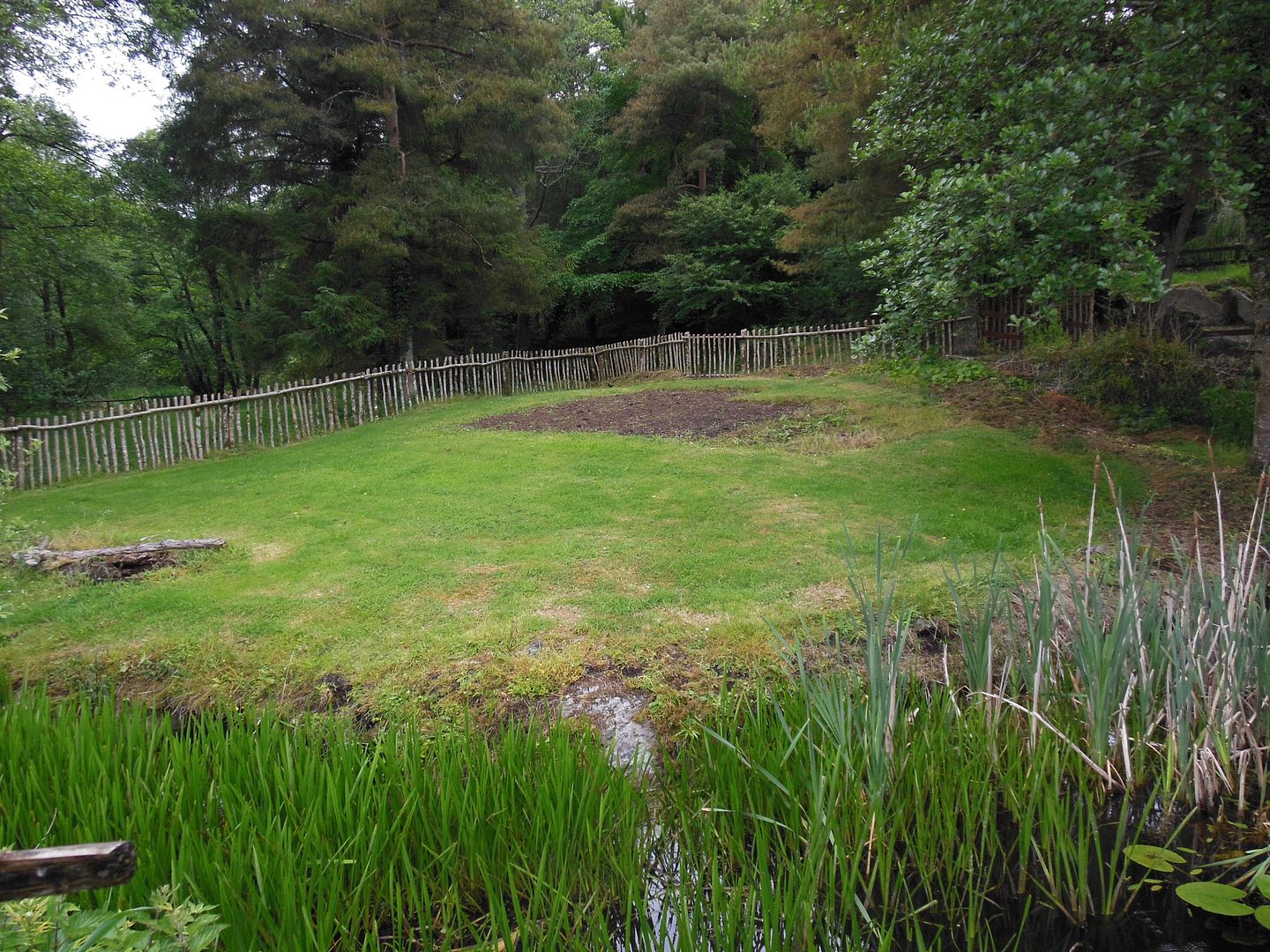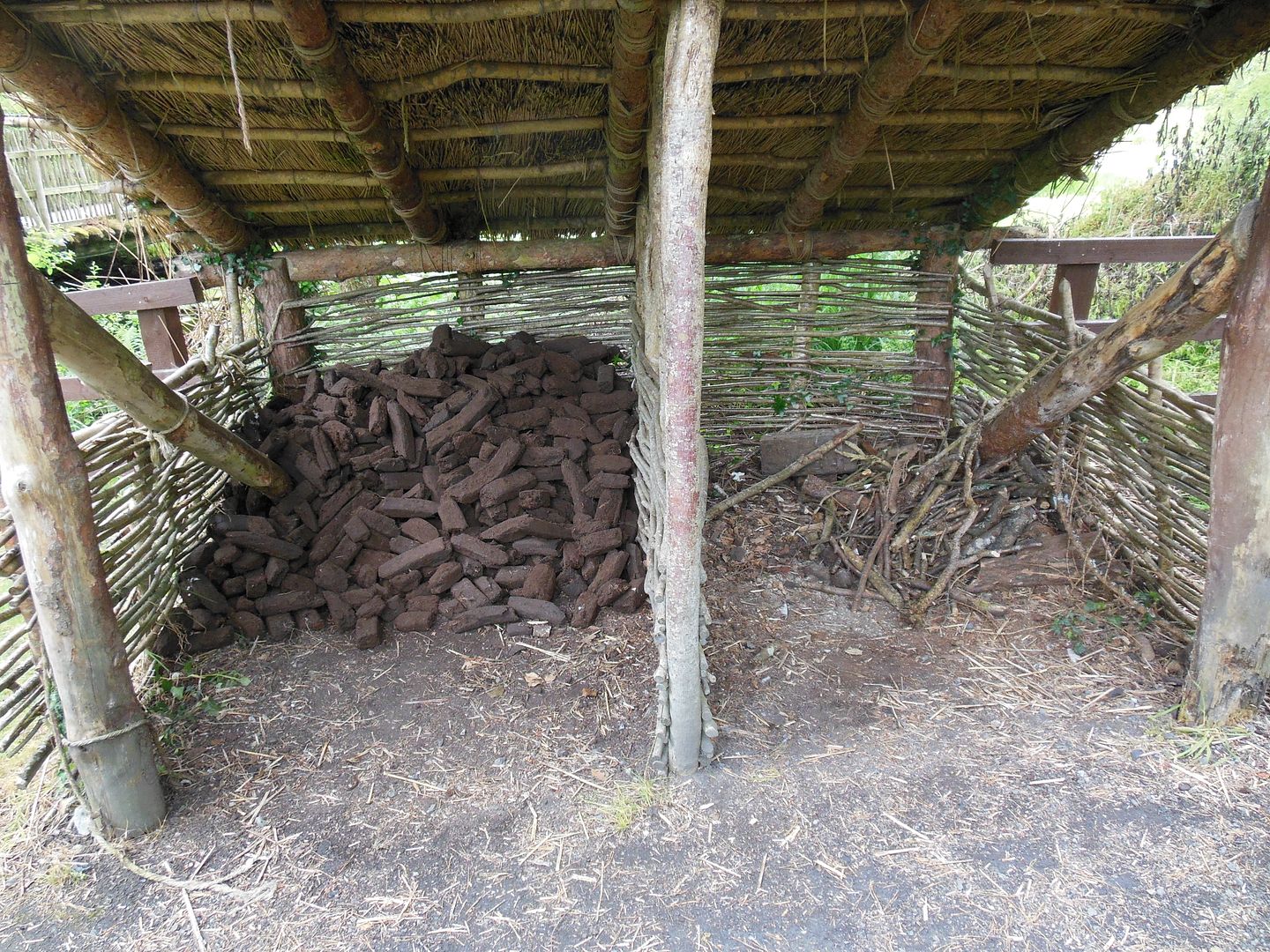Some crannogs were connected to the land by stone causeways which were often constructed in a zig-zag pattern to protect the approach. Dugout canoes were commonly used to reach the island as well. There are at least 1,200 known crannogs in Ireland.
Shown above is Bolin Island on Lough Gur. Archaeological excavation found that the island was formed by large boulders and the interior was filled with brushwood and earth. It measures about 30 meters in diameter and had timber structures in the interior. Archaeologists feel that it had a timber palisade or fence around the perimeter for defensive purposes.
Shown above is an artist’s conception of what the Bolin Island crannog would have looked like.
Shown below are photographs of the reconstructed crannog at Craggaunowen which shows more about what life was like in a crannog.
Shown above is a typical round house using a wattle-and-daub system for the walls and a thatched roof.
Shown above is a larger oval-shaped house.
Shown above is a detail of the thatched roof.
Shown above are the house interiors.
Shown above is a bed made using a woven frame and a straw/grass mattress.
Since crannogs were located on artificial islands, boats were important to the people both for transportation to the crannog as well as for fishing. Shown above is a round boat made from a pole frame covered with skin. This is similar to the bullboats found among American Indians, such as the Mandan, Hidatsa, and Arikara.
For the ancient Irish, water ways were not barriers, but a kind of super highway. Shown above is a dugout canoe which is on display in the National Museum in Dublin.
Shown above is a fence which was made using a woven pole and post system.
The people who lived in the crannogs were farmers who had gardens and raised some livestock. Shown above is a garden plot or field which would have been on the mainland. Due to the climate, some of the fields were very wet and required extra drainage. Ridges were formed in the fields to raise the seeds above ground level and provide additional drainage. The cereal crops included oats, wheat, and barley. They also raised peas and beans.
Energy has been a concern for humans for the past couple of hundred thousand years. Shown above are the two primary energy sources used in the crannogs: peat and firewood.
